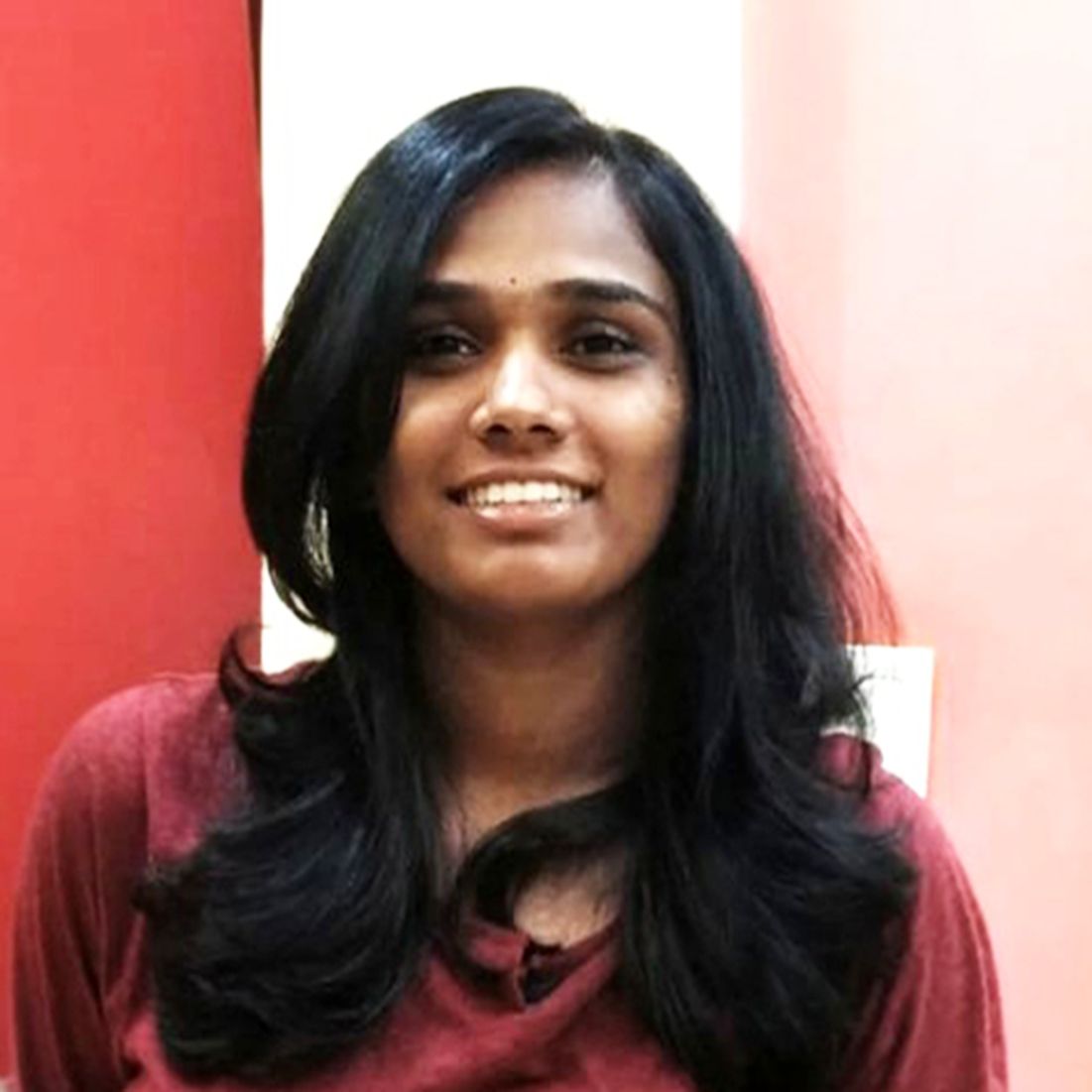| University | University of Groningen (UG) |
| Institute and/or group | Zernike Institute for Advanced Materials (Zernike) |
| Advisors | Prof. dr. Wouter Roos (UG), Prof. dr. Jan van Hest (TU/e) |
| oLife Research Areas | II. Defining properties and synthesis of Life, from the molecular to the biosphere level III. Modelling, predicting and steering of Life |
| Start date
End date Next career step |
September 1, 2020
August 31, 2023 Extension at UG till August 31, 2024 |
Profile of the fellow
Born and brought up in Kanyakumari, India, Sajitha started her career with an engineering degree in biotechnology. Her bachelor’s research project on microbial biosensors at CECRI, shaped out from an accidental encounter with fluorescing microbes, further inspired her to pursue her career in research. Followed by her Bachelor’s, through BCIL (Biotech Consortium India Limited) – industrial training programme she could explore the field of hybridoma technology at Mediclone Biotech Pvt. Ltd for six months. Subsequently, she enrolled for a direct PhD programme at the Department of Biosciences and Bioengineering at Indian Institute of Technology Guwahati. Her doctoral research, supervised by Prof. Vibin Ramakrishnan and Dr. Nitin Chaudhary, was focused on employing molecular engineering directives to engineer the nano-level architectures of peptide and organic systems comprising aromatic π-π interactions. While pursuing her doctoral research, working on the characterization of stimulus-responsive materials through AFM, she developed a profound interest in the field of mechanobiology. As a part of the oLife programme, she will be pursuing her research interest in mechanobiology working in the research labs of Prof. dr. Wouter Roos (RUG) and Prof. Jan wan Hest (Tu/e).
A mechanobiology approach to understand cellular communication in the origin and evolution of life
Microbial environments do not operate in isolation. The symbiotic associations in the microbial communities have influenced the natural selection at every entry of life to define the existing complex and interconnected cellular ecology. Despite the increased knowledge in the diversity of microbial symbionts, a better understanding of the influence of parameters on the evolution of the syntrophic partners will help understand the endosymbiotic origin of eukaryotic organelles. Also, it will help uncover the surprising and unanticipated physical process that leads to the pathways and scenarios for the origin of life. Hence deciphering the role of communication in the microbial consortia is critical in understanding the origin and evolution of cellular life. The question of cellular communication’s role in exchanging the metabolites in their primitive forms, inspired Sajitha’s research focus on the conserved phenomenon of vesicular communication.
Membrane vesicles played a crucial role in early cellular evolution and, from an evolutionary viewpoint, vesicle formation is a conserved phenomenon across the three major domains of life. Also, the functional impact of the vesicle release throughout the tree of life is an underappreciated phenomenon. In vesicular communication, the change in the membrane dynamics and accordingly physical properties affecting the function of the vesicles plays a paramount role in influencing the communication process. A detailed insight into the dynamic changes of the physical properties at the nano-scale can be determined through quantitative multiparametric characterization using Force-Distance based AFM analysis. The technique which allows simultaneous imaging and mapping of physical properties at the physiological conditions, can be used to determine the change in the biomechanical properties (elasticity, stiffness, and deformability) of the extracellular vesicles (EVs) in response to various mechanocues.
Implementing the techniques, the key goal of this study is to develop a mechanistic understanding of the vesicle-mediated interactions among the cross-feeding bacteria to unravel the role of biomechanical properties in the vesicles with changing environmental conditions. Further, the study will be extended to determine a biomechanical landscape of the EVs from the three major domains of life.

Dr. Sajitha Sasidharan
